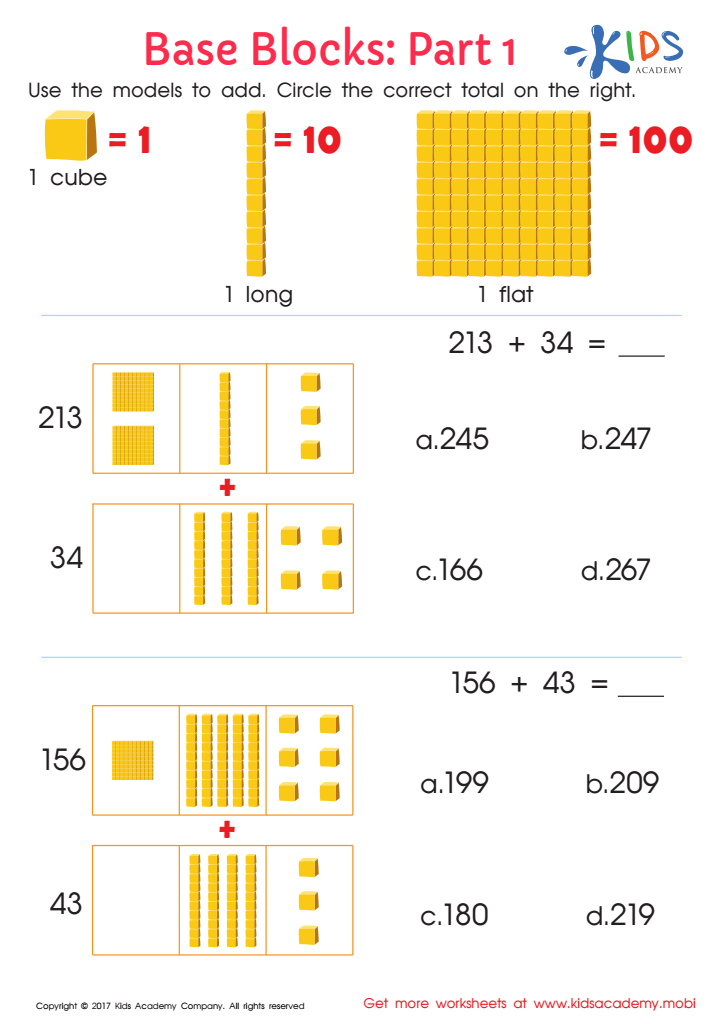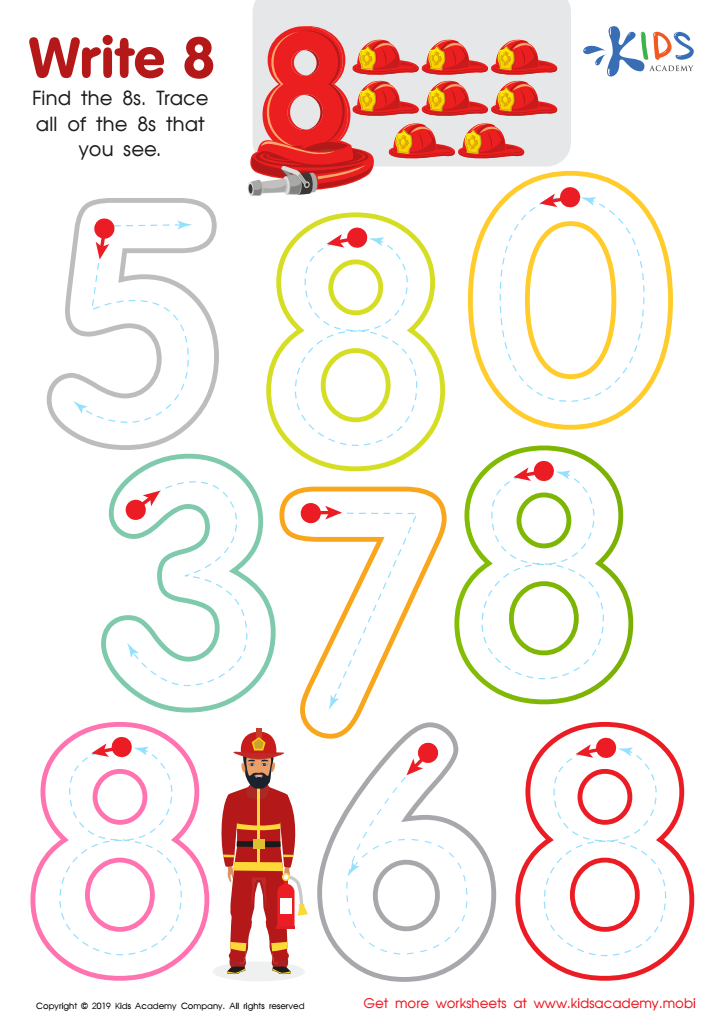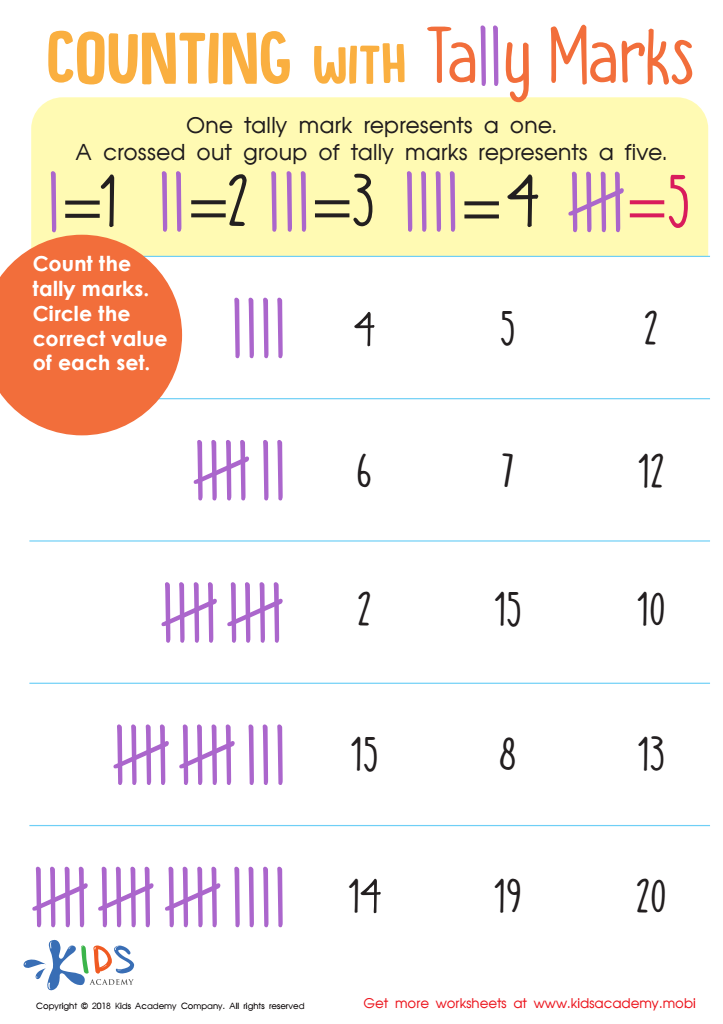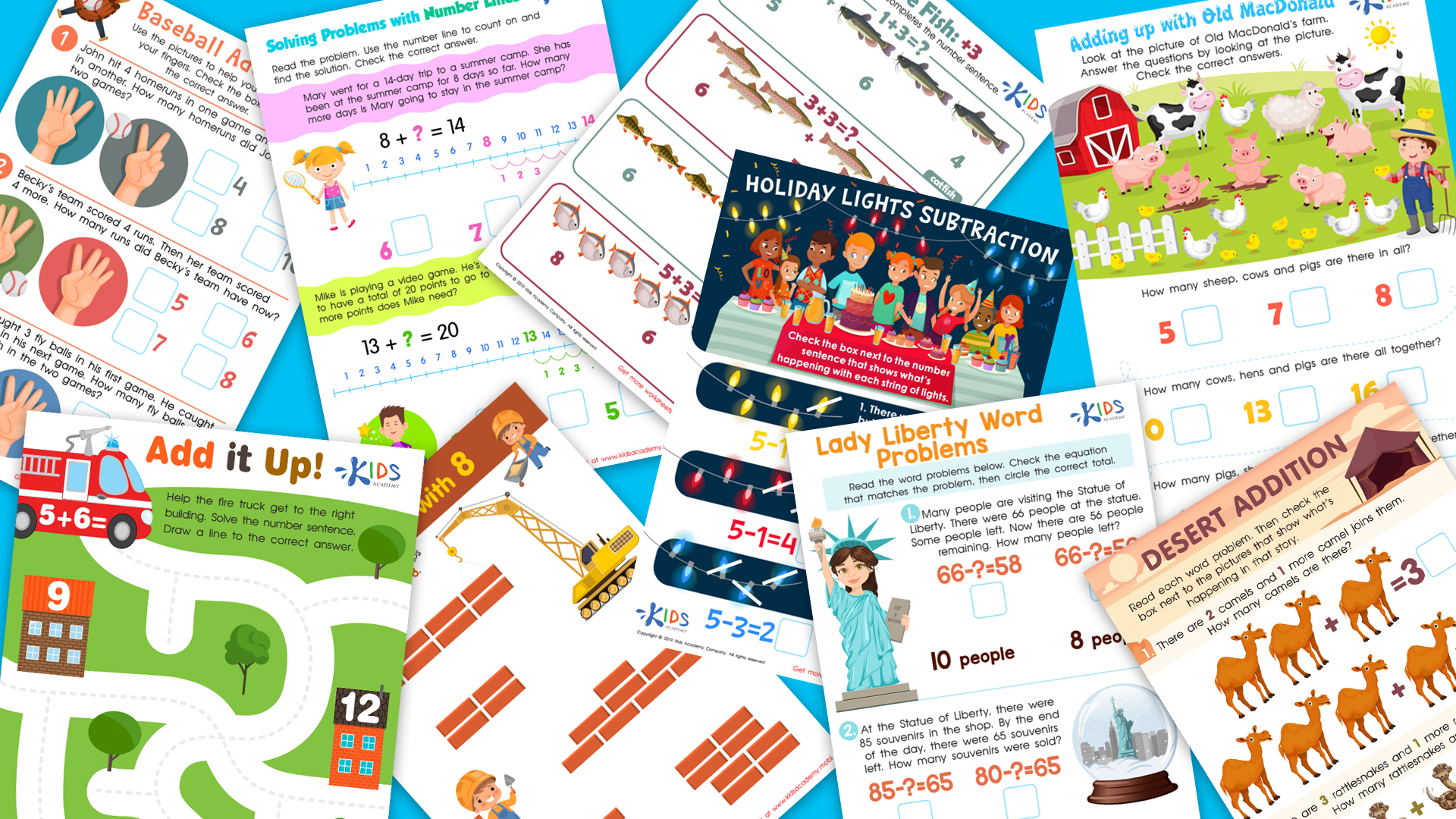Number representation Numbers Worksheets for Ages 6-8
3 filtered results
-
From - To
Unlock the world of numbers with our "Number Representation Worksheets" designed for children aged 6-8! These printable worksheets provide engaging activities that help young learners understand how to represent numbers in various forms, including standard, expanded, and word form. Our age-appropriate exercises promote number recognition, enhance mathematical reasoning, and build foundational skills essential for future math success. With colorful graphics and interactive tasks, these worksheets make learning fun and stimulating. Whether in the classroom or at home, our resources are ideal for fostering a love of math and improving number representation abilities in your child. Start exploring today!


Base Ten Blocks Worksheet: Part 1


Write 8 Worksheet


Counting with Tally Marks Worksheet
Understanding number representation is crucial for children aged 6-8, laying a foundation for their mathematical development. At this age, kids transition from concrete to more abstract ways of thinking about numbers. Learning different ways to represent numbers—such as through digits, tally marks, and bar graphs—enables children to grasp the concept of quantity more effectively. It enhances their problem-solving skills and promotes number sense, helping them understand relationships between numbers.
When parents and teachers engage with these concepts, they foster a supportive learning environment, reinforcing the importance of math in everyday life. For instance, by introducing real-world situations involving money, time, or measuring, adults can demonstrate how number representation is used daily. Moreover, mastering number representation aids in building confidence and encourages a positive attitude toward math, which is crucial for academic success.
As students progress, these foundational skills become integral for more complex topics, such as addition and subtraction, fractions, and even introductory algebra. By prioritizing number representation, parents and teachers help nurture a well-rounded mathematical understanding, ensuring that children are equipped to tackle future challenges and appreciate the significance of mathematics throughout their lives.

 Assign to My Students
Assign to My Students
















